Prof Whitty speaks to camera: “We must all stay home. If it is essential to go out, remember wash your hands, cover your face indoors, and keep your distance from others.”
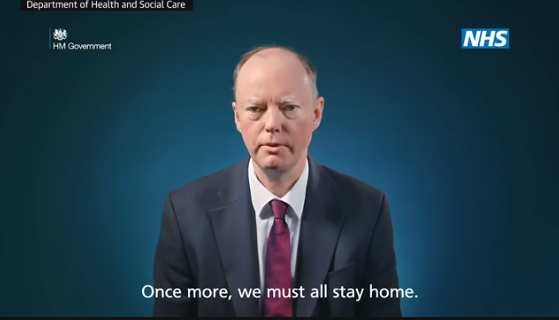
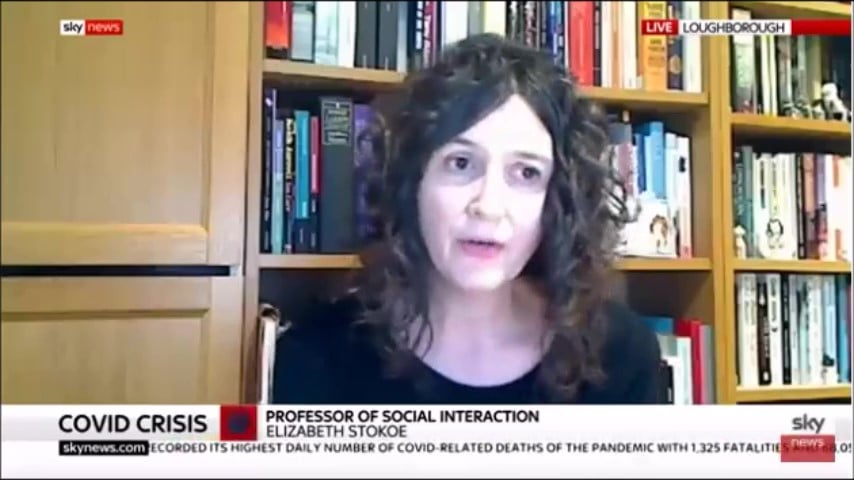



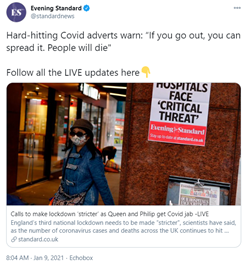
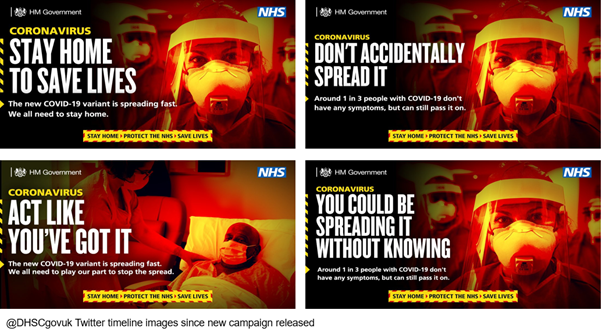

"Act like you've got it" is good advice - BUT it has been good advice since March last year. It underpins the whole point of mask use and other interventions. Everybody should have been on the same page on this for monthshttps://t.co/1PUngZcnhZ
— Bill Hanage (@BillHanage) January 8, 2021
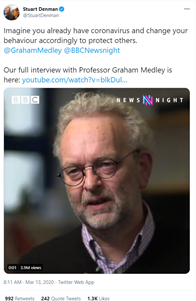
Will the public adhere to the new COVID lockdown?
— Stephen Reicher (@ReicherStephen) January 7, 2021
Why this is the wrong question, how issues of adherence have been misrepresented, and how this has led us to address them in the wrong way. Our latest (with @ProfJohnDrury) in the British Medical Journalhttps://t.co/zjDh3fCe7E
Important question. Problem is there have been mixed messages already on work:
— Adam Wagner (@AdamWagner1) January 5, 2021
- Prime Minister: \u201cif you absolutely cannot work from home\u201d
- Guidance: \u201cwhere it is unreasonable for you to do your job from home\u201d
- Briefing to media: \u201cimpossible to do so from home\u201d
- Law: \U0001f937\U0001f3fc\u200d\u2642\ufe0f https://t.co/dSmBj01gv1
\u201cWe should be having a stricter lockdown, yet we\u2019re got a more lax lockdown.\u201c
— BBC Newsnight (@BBCNewsnight) January 8, 2021
SAGE member & Director of the Centre for Behaviour Change at UCL @SusanMichie says in colder weather and a more infectious variant, current measures need to be tougher#Newsnight pic.twitter.com/URYgh0ma8y
Sir, Log yahan.. 13 days patience nhi rakh sakte aur aap 2013 ki baat kar rahe ho. Even Aap Ready made portfolio banakar bhi de do to bhi wo 1 month me hi EXIT kar denge \U0001f602
— BhavinKhengarSuratGujarat (@IntradayWithBRK) September 19, 2021
Neuland 2700 se 1500 & Sequent 330 to 230 kya huwa.. 99% retailers/investors twitter par charcha n EXIT\U0001f602